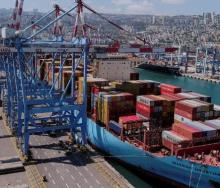Less than 24 hours after the IMO celebrated Day of the Seafarer with this year’s theme, ‘My Harassment-Free Ship’, it has emerged that suicide is the biggest killer of seafarers.
According to the findings of a survey conducted by leading marine insurer, Gard, death by one’s own hand now accounts for more deaths at sea than fatal injury incidents.
The Norwegian company’s second crew-claims report, published yesterday, draws on claims data from approximately 3 000 cases in 2024, alongside insights from over 6 000 seafarers worldwide.
The report highlights that suicide was responsible for around 9% of crew fatalities, surpassing deaths caused by occupational injuries, which accounted for roughly 8%. Illness remained the leading cause of death at sea, representing 83% of fatalities.
“This underscores the urgent need for greater attention to mental health and wellbeing among seafarers,” said Lene-Camilla Nordlie, head of people claims at Gard.
“While some stressors can be managed by seafarers themselves, many factors are influenced or controlled by shipping companies and regulatory authorities.”
The report found that most suicide cases involved officers, both senior and junior, with 75% of those affected being under the age of 41 – a notably younger demographic than other onboard fatalities. Common methods of suicide included hanging and drowning. In the majority of cases, deaths by suicide were excluded from contractual compensation.
These findings echo data from the International Labour Organization (ILO), which in 2023 reported 26 confirmed suicide cases among seafarers across 51 countries, representing 6.5% of total deaths. The ILO also noted 91 cases of persons overboard, where the cause was undetermined but might include suicides.
Mental health challenges among seafarers have long been described as a silent epidemic, exacerbated by the unique pressures of life at sea and a culture of underreporting. Steven Jones, founder of the Seafarers Happiness Index, has suggested that actual suicide figures are likely higher than official statistics indicate.
The difficulty in definitively determining suicide at sea, combined with a reluctance to report such deaths due to emotional and financial concerns – including the impact on insurance payouts – contributes to the problem. Cultural sensitivities within the maritime industry further hinder open discussion.
Experts point to a range of factors driving mental health strain among seafarers, including prolonged isolation, separation from family, fatigue, and sleep deprivation.
In response, an increasing number of shipping companies and maritime charities are providing anonymous helplines with multilingual support, counselling services, and online platforms to improve access to mental health resources for seafarers.
This latest Gard report serves as a stark reminder of the critical need for the maritime industry to prioritise mental health and wellbeing, ensuring that seafarers receive the support they urgently require.
SOURCES: Marine Executive, Splash 247 and others.













